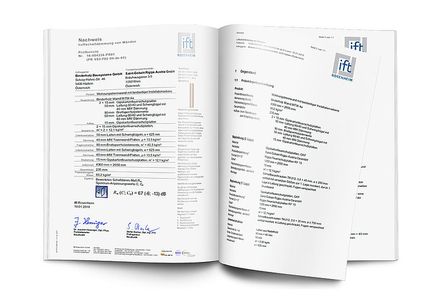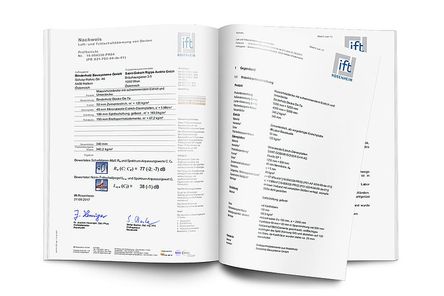21.02.2018
NewsCost-effectiveness and efficiency combined, CLT BBS apartment ceiling and partition
The overall thickness of the CLT BBS, its surface weight and bending strength play a key role in the sound insulation of the basic structure (without additional layers) with solid wood constructions. The sound insulation of the entire component is significantly increased by means of additional panels. Component systems have been developed through the course of comprehensive testing at the ift Rosenheim for the use of BBS as apartment ceilings or partitions, which meet sound insulation requirements. The measurements clearly show that these optimised system also compare favourably with reinforced steel ceilings, albeit at a fifth of the mass.
CLT BBS ceilings with encased filler
The filler increases the mass in the form of loading and, at the same time, it forms a flexible layer that does not represent a structure-borne bridge. This produces a higher ceiling loading, through which the necessary mass-spring-mass system functions and thus delivers good impact noise protection. Bound filler always results in increased rigidity. However, the reduction in impact noise is either significantly or slightly worsened depending on the binder used. The deterioration is worse with a cement-bound filler than with a flexible filling, for instance using PUR or latex-based systems. An encased filler therefore represents the ideal case. It is contained to prevent movement by the battens bolted to the unfinished ceiling.
CLT BBS apartment partition with installation layer on both sides
Air sound waves cause systems to vibrate and can easily transmit the sound to other rooms, a factor that needs to be prevented as much as possible. This transmission can be countered by means of a flexible bearing or decoupling. With BBS apartment partitions, the plasterboard panel is decoupled by vibration brackets from the load-bearing structure. This does not cause the CLT BBS wall to seriously vibrate, and is also shielded on the receiving side by the second decoupling layer of plasterboard, effectively preventing flanking transmission. The test results from 2017 showed that a system with two layers of plasterboard panels applied to both sides coupled with anti-vibration brackets to provide acoustic decoupling from the load-bearing CLT BBS represents an outstanding solution for meeting the requirements governing apartment partitions.
There are also benefits in the event of a fire: the CLT BBS has already been tested with a 15 mm layer of plasterboard REI 90, which meets the most stringent Austrian Institute of Construction Engineering (OIB) guidelines governing load-bearing walls in timber construction.





